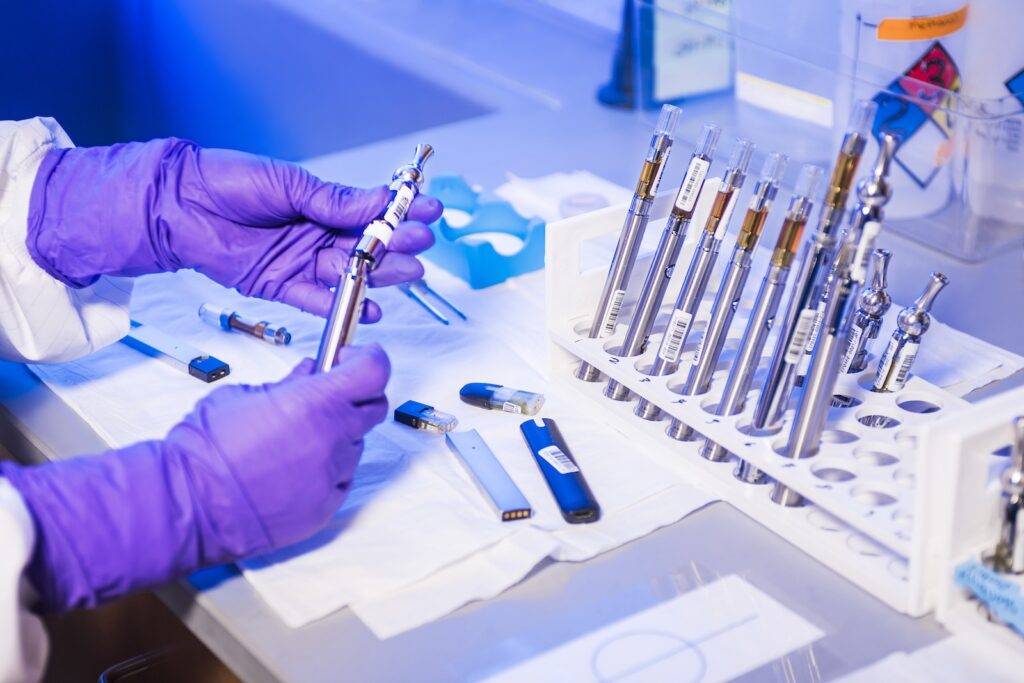Table of Contents
Introduction to CRISPR Technology
The Clustered Regularly Interspaced Short Palindromic Repeats (CRISPR) technology is a revolutionary genetic engineering tool that has rapidly gained popularity in the scientific community. This technology enables scientists to easily edit DNA, which enables them to create new treatments for diseases, enhance food production, and even grow replacement organs.
Before the development of CRISPR, gene editing was challenging. The process relied on a complicated series of steps using restriction enzymes and ligases. But with CRISPR-Cas9 (the most commonly used variation), scientists can easily target specific genes they want to alter or remove by cutting through the strands of DNA at precise locations.
The discovery of the CRISPR system dates back over two decades ago when it was first identified as a bacterial defense system against viruses. However, it wasn’t until around ten years ago that researchers found out how it could be adapted for other purposes like genome engineering.
This breakthrough technology revolutionized gene editing making it possible for easier manipulation of living organisms including plants and animals. With this innovation comes many potential benefits such as curing hereditary diseases like cystic fibrosis or sickle cell anemia while also having implications for improving agriculture yields, helping combat climate change and even bioengineering animal organs suitable for human transplanting.
In summary,
the emergence of the CRISPR technology marks one of modern science’s biggest achievements with its profound impact on various fields from medicine research to environmental conservation.
How Does CRISPR Work?
In order to understand how CRISPR works, it’s important to have some background knowledge about genetic engineering. Essentially, scientists use gene editing tools such as CRISPR to make precise changes in an organism’s DNA sequence. This can help them study the function of specific genes or potentially cure genetic diseases.
CRISPR stands for Clustered Regularly Interspaced Short Palindromic Repeats and refers to a natural defense mechanism found in bacteria that helps protect against viruses. Scientists have adapted this system for use in genetic engineering by creating a custom RNA molecule called guide RNA (gRNA) that can target a specific DNA sequence.
The process of using CRISPR involves three main steps:
- Selecting the target DNA sequence: Scientists identify the part of the genome they want to edit and design a gRNA molecule that will bind specifically to that location.
- Cutting the DNA: Once the gRNA has located its target, it recruits an enzyme called Cas9 which acts like molecular scissors and cuts both strands of DNA at that spot.
- Making edits: After cutting the DNA, researchers can add or remove specific nucleotides (the building blocks of DNA) at that site. The cell then repairs itself using either non-homologous end joining (NHEJ), which often results in small insertions or deletions or homology-directed repair (HDR), where researchers provide additional template DNAs along with your edited version so those templates incorporate resulting into a precisely edited new strand ofDNA
This revolutionary tool is changing not only our understanding but also reshaping practical applications of genetics in medicine, agriculture and biotechnology. The CRISPR system has made genetic modification much faster, easier, and more precise than ever before.
The Applications of CRISPR in Genetic Engineering
CRISPR is a powerful and versatile tool that has revolutionized the field of genetic engineering. Since its discovery in 2012, researchers have been exploring the various ways this technology can be used to edit genes.
One of the most promising applications of CRISPR is in medicine. By using CRISPR to target specific genes, scientists hope to develop new treatments for diseases like cancer and HIV/AIDS. For example, they could edit cells from a patient’s immune system so that they are better equipped to fight cancer cells or prevent viral infections.
Another area where CRISPR shows potential is in agriculture. By editing plant DNA, scientists could create crops that are more resistant to disease or pests, require less water or fertilizer, and produce higher yields. This could help address issues of food security as well as reduce the environmental impact of agriculture.
In addition to these practical applications, CRISPR has also opened up new avenues for research on basic biological processes. Scientists can use CRISPR to study how genes function by selectively turning them on or off in different cell types or organisms. They can also create animal models of human diseases by introducing specific mutations into their genomes.
Despite all these exciting possibilities, there are also concerns about the ethical implications of using such powerful technology to manipulate life at the molecular level. Some worry that it could lead us down a slippery slope towards eugenics or other forms of bioengineering that blur traditional boundaries between species.
In summary
, while there are still many unanswered questions surrounding this emerging innovation in genetic engineering known as CRISPR/Cas9 system; with further research advancements it will one day have incredible implications beneficial reasons both environmentally and medically but we must regulate its usage ethically.
Advantages and Limitations of Using CRISPR Technology
The development of the CRISPR technology has brought about significant advancements in genetic engineering. One of its biggest advantages is that it allows scientists to make precise modifications to the DNA, which has not been possible with previous methods.
CRISPR-based technologies have already been used successfully for various purposes, including treating genetic disorders in animals such as muscular dystrophy and sickle cell disease.
Another advantage of CRISPR is that it takes less time and effort compared to previous techniques used for genome editing. It can be performed cheaply and quickly because it requires fewer resources and personnel than other gene-editing tools.
Despite its many benefits, there are also limitations associated with using CRISPR technology. The most common limitation is off-target effects. Off-target effects occur when changes are made at unintended locations within the genome, leading to unwanted consequences.
In addition, while CRISPR-based technologies have shown great potential in curing diseases or modifying genes, there remains a lack of understanding around how some changes may affect overall health in the long term. Therefore more research will need to be done before this technique becomes widely adopted clinically.
In conclusion,
Overall, while there are limitations surrounding this emerging innovation in genetic engineering – many believe that further research could lead to revolutionary life-changing treatments.
Ethical and Regulatory Concerns Surrounding the Use of CRISPR
While the potential benefits of CRISPR technology are numerous, there are also ethical and regulatory concerns that must be addressed in order to ensure its safe and responsible use.
The ability to edit genes with a high degree of precision raises concerns about creating “designer babies” – children whose genetic code has been manipulated for desired traits. This presents a range of moral issues related to playing God or interfering with nature, as well as potentially exacerbating existing social inequalities if only certain individuals or groups can afford such treatments.
Another challenge is the risk of unintended consequences from altering an organism’s DNA. While scientists have made significant progress in reducing off-target effects (DNA changes in parts unrelated to targeted gene editing), it’s still possible for errors or mutations to occur. Depending on what types of cells have been affected by these unwanted changes, this could lead to serious health problems down the line for both individual patients as well as future generations through inherited genetic disorders.
In addition to ethical considerations, there are legal and regulatory issues that need addressing before widespread use becomes feasible. Currently, scientific research on CRISPR technology is subject to stringent guidelines established by national regulatory bodies around the world (such as Food & Drug Administration/FDA in US). Many questions remain unanswered: Who should bear responsibility for any adverse outcomes? How do we decide who gets access? What kind of oversight will be required?
Despite these challenges , however, many researchers believe that CRISPR holds great promise for advancing medical science and improving human health outcomes – provided all stakeholders involved work together cooperatively towards developing shared guidelines and best practices regarding genetic engineering technologies like CRISPR
.
Future Prospects for Research and Development on CRISPR
The potential applications of CRISPR technology in the field of genetic engineering are vast and offer a range of possibilities. There is no doubt that researchers will continue to develop new ways to implement this tool in order to bring about beneficial outcomes.
One area where we can expect significant advancements is in using gene editing techniques like CRISPR as treatments for genetic conditions. One example, which has already seen success, is the use of CRISPR-Cas9 to treat sickle-cell anemia by replacing malfunctioning blood cells with healthy ones. In the future, it may even be possible to cure certain diseases before they manifest themselves within individuals.
Another interesting avenue for research involves reducing our dependence on traditional antibiotics by using bacterial immune systems such as CRISPR-Cas13d programmed against specific virus infections. While early tests have been limited thus far, there’s growing hope that this approach could lead us towards a post-antibiotic era.
In addition, scientists are studying how modifications made through gene-editing tools might combat climate change or improve agricultural practices globally . For instance; crop plants with increased resistance against pests or droughts could become staple parts of many food chains worldwide only if research continues into these areas extensively.
Overall,
,
CRISPR has opened up numerous exciting avenues
, promising innovative pathways forward
that previously seemed out-of-reach.
. Beyond healthcare and agriculture over time,future discoveries could potentially create entirely new industries altogether. Therefore,
this innovation stands poised
.




